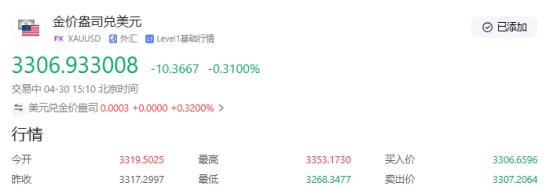Europe and Ukraine's concerns come true: Trump may give up mediating the Russian-Ukrainian peace talks, and the gold market faces another geopolitical storm
- 2025年5月6日
- Posted by: Macro Global Markets
- Category: News

1. Event Focus: The United States has run out of patience with Ukraine, and the peace talks are on the verge of collapse
On April 30th local time, the Trump administration's attitude towards the Russia-Ukraine peace talks took a sharp turn for the worse. In an interview, White House envoy Kellogg bluntly stated that Russia's proposal for a "three-day ceasefire" was "absurd" and that the United States was seeking a "comprehensive and permanent ceasefire." This statement echoes Trump's previous tough stance. On April 23, he publicly criticized Ukrainian President Zelensky for "obstructing the peace process" and threatened that "if the negotiations fail, the United States will withdraw completely."

II. Escalating geopolitical risks: European energy security and the Ukrainian sovereignty crisis
Trump's tendency to "abandon talks" has triggered a chain reaction:
Europe’s energy security is under pressure: If the Russia-Ukraine conflict becomes protracted, Europe’s dependence on Russian gas may resurface. Although the EU has promoted energy transformation, countries such as Slovakia and Hungary still rely on Gazprom pipelines passing through Ukraine. Once the United States withdraws its mediation, Russia may resume pressure on European energy, pushing up European inflation and dragging down economic growth.
Ukraine's sovereignty crisis deepens: Zelensky risks cutting US military aid if he refuses to compromise. White House spokesman Levitt hinted on April 23 that the United States might "suspend support for Ukraine." This will weaken Ukraine's defense capabilities and enable the Russian army to consolidate its control over the four eastern Ukrainian states.
Widening rift within NATO: The conflicting positions between European countries and the United States on the Crimea issue could impact NATO unity. EU officials revealed that if the United States unilaterally recognizes Russia's sovereignty over Crimea, Europe may part ways with the United States in areas such as sanctions against Russia and trade negotiations.
3. Gold market: dual drivers of risk aversion and policy game
Geopolitical uncertainty is reshaping gold pricing logic:
Short-term safe-haven buying surges: In the Asian session on April 30, spot gold traded at $3,313 an ounce, rebounding $14 from the low of $3,299 on April 23. The market's concerns about Trump's abandonment of peace talks, coupled with the U.S. consumer confidence index falling to 86 in April (the lowest since the COVID-19 outbreak), pushed investors to turn to gold for safe havens.

Fed policy expectations diverge: Although market expectations for rate cuts have increased (Goldman Sachs predicts that US GDP growth in the first quarter will be -0.8%8), the game between Trump and Powell has exacerbated policy uncertainty. If the Federal Reserve maintains interest rates to fight inflation, gold may come under pressure; if the interest rate cut is implemented, the opportunity cost of holding gold will decrease, and the gold price may break through the resistance level of $3,350.
IV. Future Outlook: Geopolitical “Black Swan” and Data “Shock Wave”
Key nodes in May: April 30: If the US April ADP employment data (expected to increase by 123,000 jobs) is lower than expected, it may strengthen expectations of interest rate cuts, which is bullish for gold; May 9: Russia's Victory Day parade. If the Russian-Ukrainian conflict escalates, gold may trigger safe-haven buying; Policy risks: If Trump fulfills his threat to "stop supporting Ukraine", it may trigger the market to re-price the European security landscape, and the gold volatility (GVZ) may exceed 30%.
